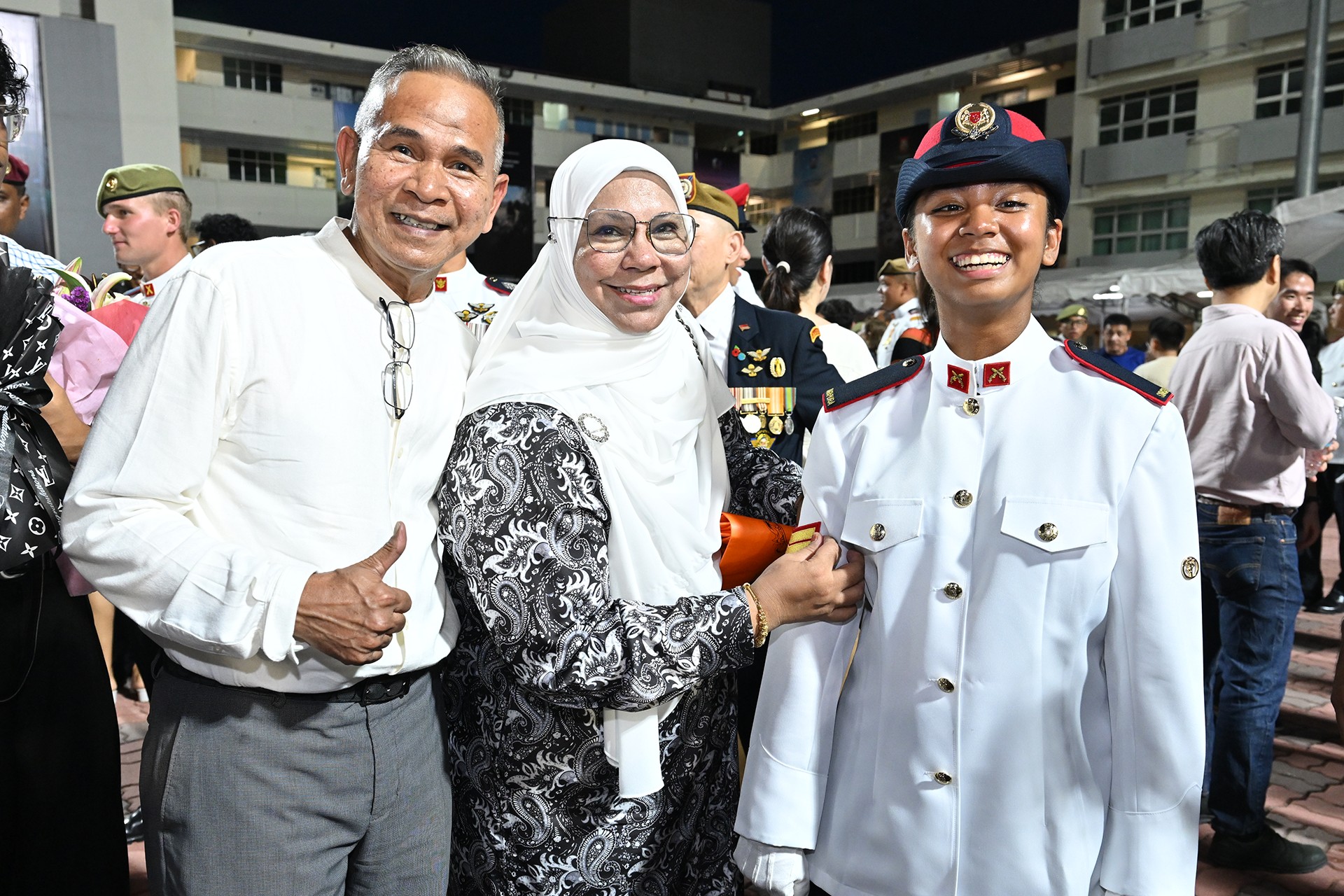INTEGRATED ACTION AT EXERCISE WALLABY
STORY // Joy Wong
PHOTO // Chai Sian Liang and courtesy of Army
PIONEER heads to the Shoalwater Bay Training Area (SWBTA) in Queensland, Australia, where over 4,300 personnel and 350 platforms are put through their paces as a networked fighting force.
High-velocity rounds rip through the air as the Leopard 2SG Main Battle Tanks (MBTs) fired. Amid the deafening explosions and the roar of spinning blades and engines, rockets from the AH-64D Apache attack helicopters rain down on the dusty terrain.
Swiftly, the Terrex Infantry Carrier Vehicles (ICVs) manoeuvre through dust and smoke plumes towards the enemy position. Soldiers, armed with assault rifles and other weapon systems, charge out from the vehicles, clear the area and capture their objective.
Debut showing
This was the live-firing scenario held on 10 Oct at Exercise Wallaby. About 400 soldiers and airmen from the Singapore Armed Forces (SAF) operated more than 30 land and air assets in a synchronised effort to deliver precision fire on enemy targets.
The fast and furious drill saw the Terrex ICVs fighting alongside other networked platforms for the first time at this annual exercise, which spanned three frames from 22 Sep to 24 Nov.
Operating the Terrex ICVs were soldiers from the 5th Battalion, Singapore Infantry Regiment (5 SIR). The unit was the first of the SAF's two operationalised motorised infantry units to train in SWBTA.
On the debut of the motorised infantry unit at this year's live-firing, Exercise Air Director and Commander of the Tactical Air Support Group Colonel (COL) Jonathan Tan said: "The incorporation of the Terrex ICVs increased the complexity and dynamism of the exercise scenario, because (on top of the MBTs) there are now more land vehicles on the move.
"To avoid fratricide, we have to make sure that there is tight coordination between the land and air assets."
The large expanse of training space in the SWBTA - an area about four times the size of Singapore - allowed manoeuvres by the Terrex ICVs and air-land operations to be conducted, honing the SAF's integrated strike capabilities, added COL Seet Uei Lim, Exercise Frame 1 Commander and Commander 3rd Singapore Infantry Brigade.
Networked for success
Over the years, the SAF's transformation into the 3rd Generation networked fighting force has resulted in tighter integration among air, land and sea operations.
COL Tan noted that achieving this at this year's Exercise Wallaby was no mean feat. To ensure close air-land integration throughout all stages of operations, both the Army and the Air Force came together from the start to plan the exercise.
A key component of the SAF's networked system is the Battlefield Management System (BMS), which connects various warfighting assets through the Battalion Headquarters (HQ) and the STrike ObserveRs Mission (STORM) team during battles.
The STORM team comprises six soldiers who specialise in the search and destruction of targets. They operate on mobile platforms and work closely with the scout team to spot enemy targets.
At the command of the Battalion HQ, the STORM team activates artillery and air assets to engage the target. In the background, the Air-Land Tactical Control Centre (ALTaCC) coordinates the deployment of air assets and manages the airspace to facilitate enemy target engagement.
Enhanced battlefield coordination
At this year's live-firing, the scout and STORM teams were mounted on the Terrex ICVs. This enabled them to move faster, resulting in closer coordination among the sensors and shooters.
COL Tan explained: "When the sensor (scout team) passes surveillance information to the STORM team, the latter is able to locate the enemy target quickly and activate the shooters (Apache helicopters) to strike the target at the right time and the right spot."
The BMS also links the infantry soldiers, who are equipped with the Advanced Combat Man System (ACMS), to the Terrex ICVs and Battalion HQ.
Carried by two team leaders and a section commander in a seven-man section, the ACMS is retrofitted with an array of sensors, portable computers and smart weaponry.
It enables soldiers on the ground to relay information and be constantly updated on the locations of friendly and hostile forces. Section commanders are also empowered to call for support fire from air and land forces, and request medics to treat casualties through the communications keypad.
Together, the BMS and ACMS present a common combat picture - formed from data collected by soldiers on the ground and airborne sensors like the Skyblade III mini-Unmanned Aerial Vehicle (UAV) - to commanders from different units, allowing them to make more informed and timely tactical decisions.
Said Commanding Officer 5 SIR Lieutenant Colonel (LTC) Peter Chee: "With the BMS and ACMS, I'm able to see where all my Terrex ICVs and my soldiers are. This improves my situational awareness and lets me command, control and coordinate the movement of forces more easily over a vast space."
PM Lee visits exercise participants
As part of his official trip to Australia from 9 to 13 Oct, Prime Minister Lee Hsien Loong witnessed the live firing at Exercise Wallaby on 10 Oct.
Noting the value of training in SWBTA, an area several times the size of Singapore, he also commended the dedication of the national servicemen exercise participants "who are keen, who are committed, who are doing their best and mastering their skills as well as performing their duties for Singapore".
Besides interacting with the servicemen, Mr Lee tried his hand at driving the made-in-Singapore Terrex ICV. He commented on the importance of Singapore's ability to develop some of its military hardware, so as to suit the operational requirements of the SAF. "We can tailor it to our circumstances, and as our circumstances change, we can adapt and improve equipment as we go along."
The big test
Apart from making its debut at the live firing at Exercise Wallaby, 5 SIR was also the first motorised infantry battalion to undergo the Army Training Evaluation Centre (ATEC) evaluation at the SWBTA.
An ATEC evaluation tests the combat proficiency of a unit to ensure that its operational readiness is maintained. In a typical appraisal, soldiers from the ATEC's Opposing Force (OPFOR) Company play the role of the "thinking enemy", while a core team of umpires shadow the various appointment holders - from the Commanding Officer to the section commanders - throughout the entire period. This is to ensure a fair and credible assessment of the unit's overall performance.
During the five-day evaluation from 2 to 6 Oct, the 700-strong battalion was assessed on its ability to plan and execute specific operations, which included dismounted attacks, helicopter insertions and combat in built-up areas. Besides warfighting capabilities, other aspects such as casualty evacuation and treatment were also evaluated.
Here's a look at some moments captured during the test.
- gallery-content-A-galler









